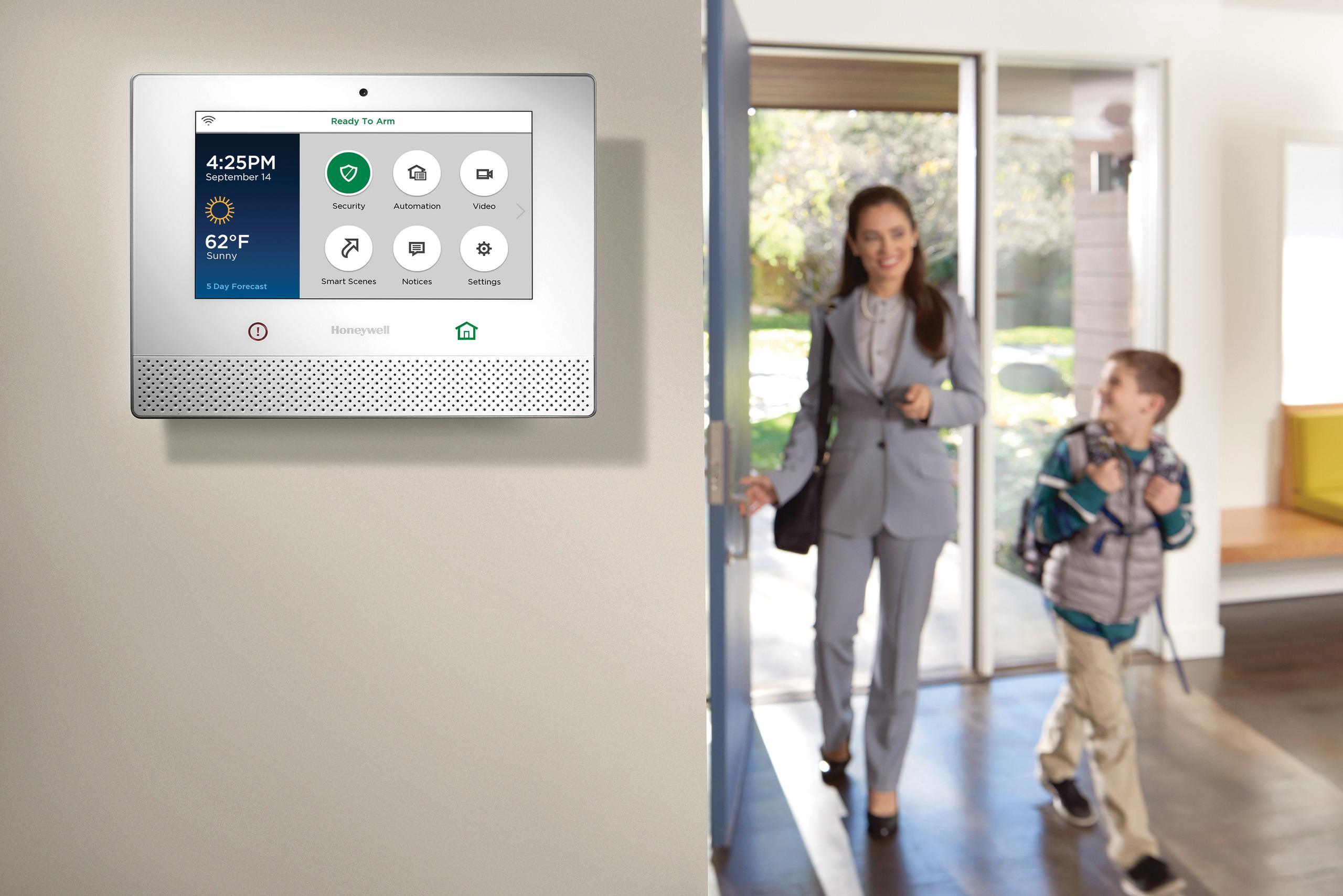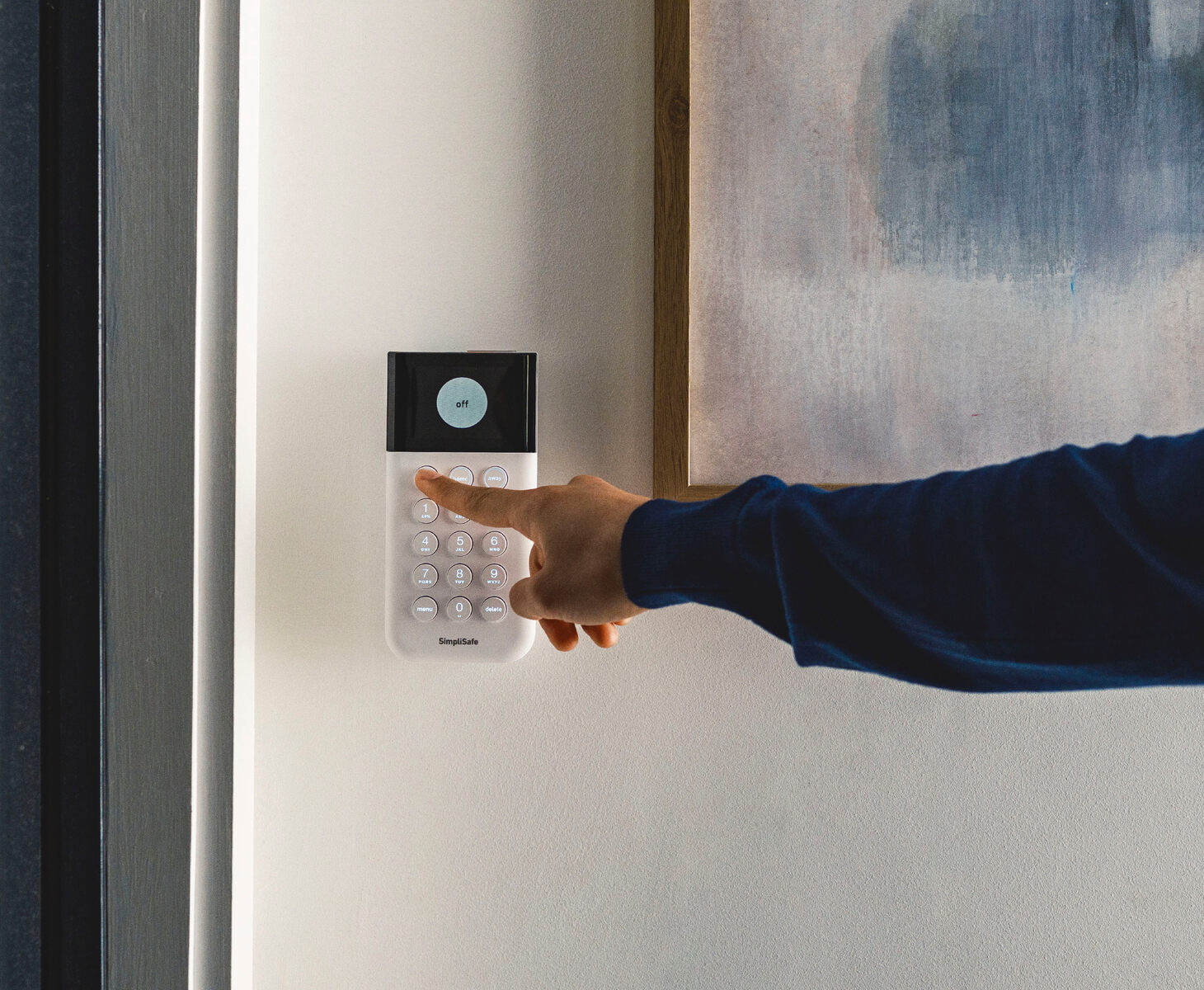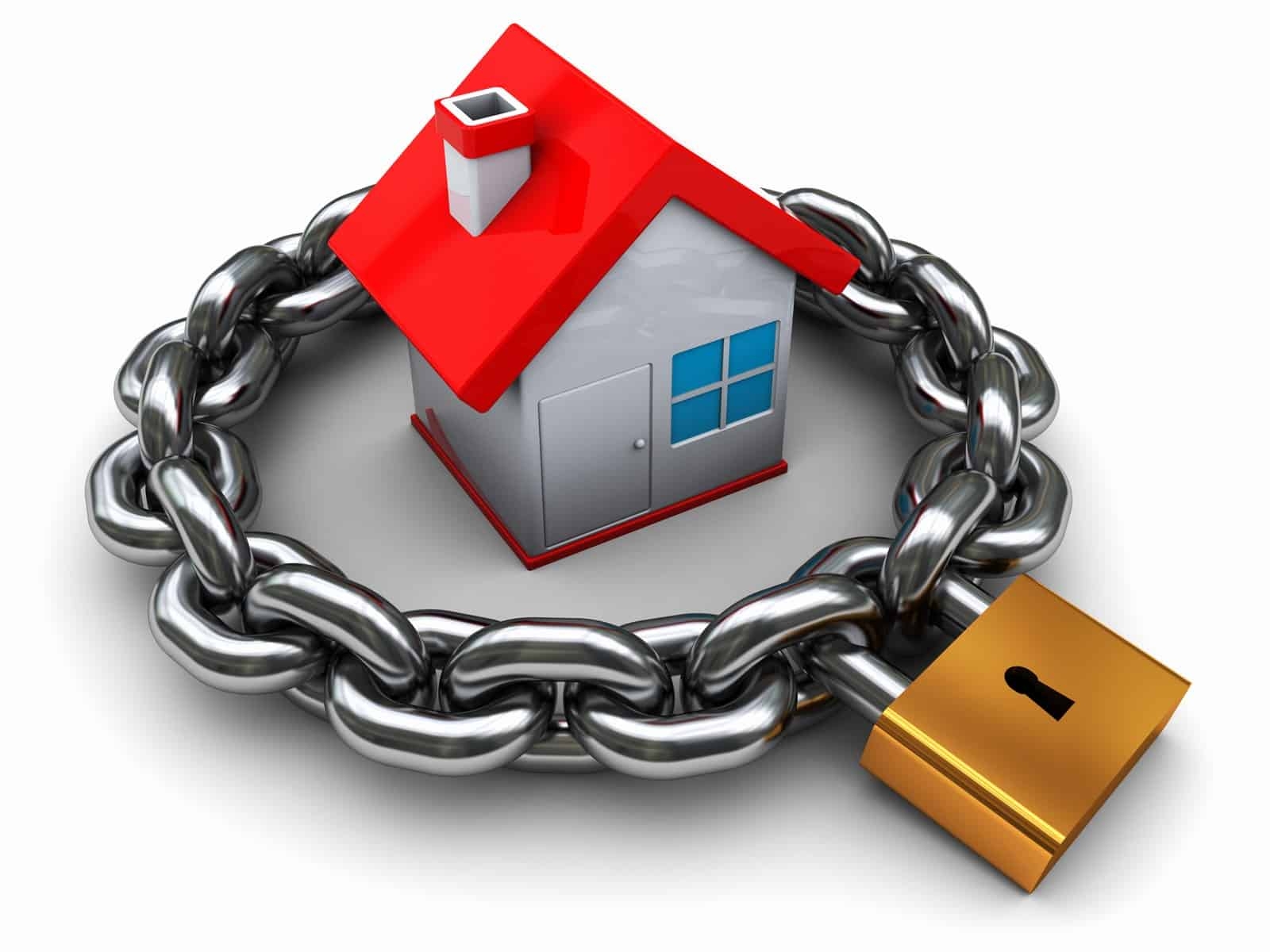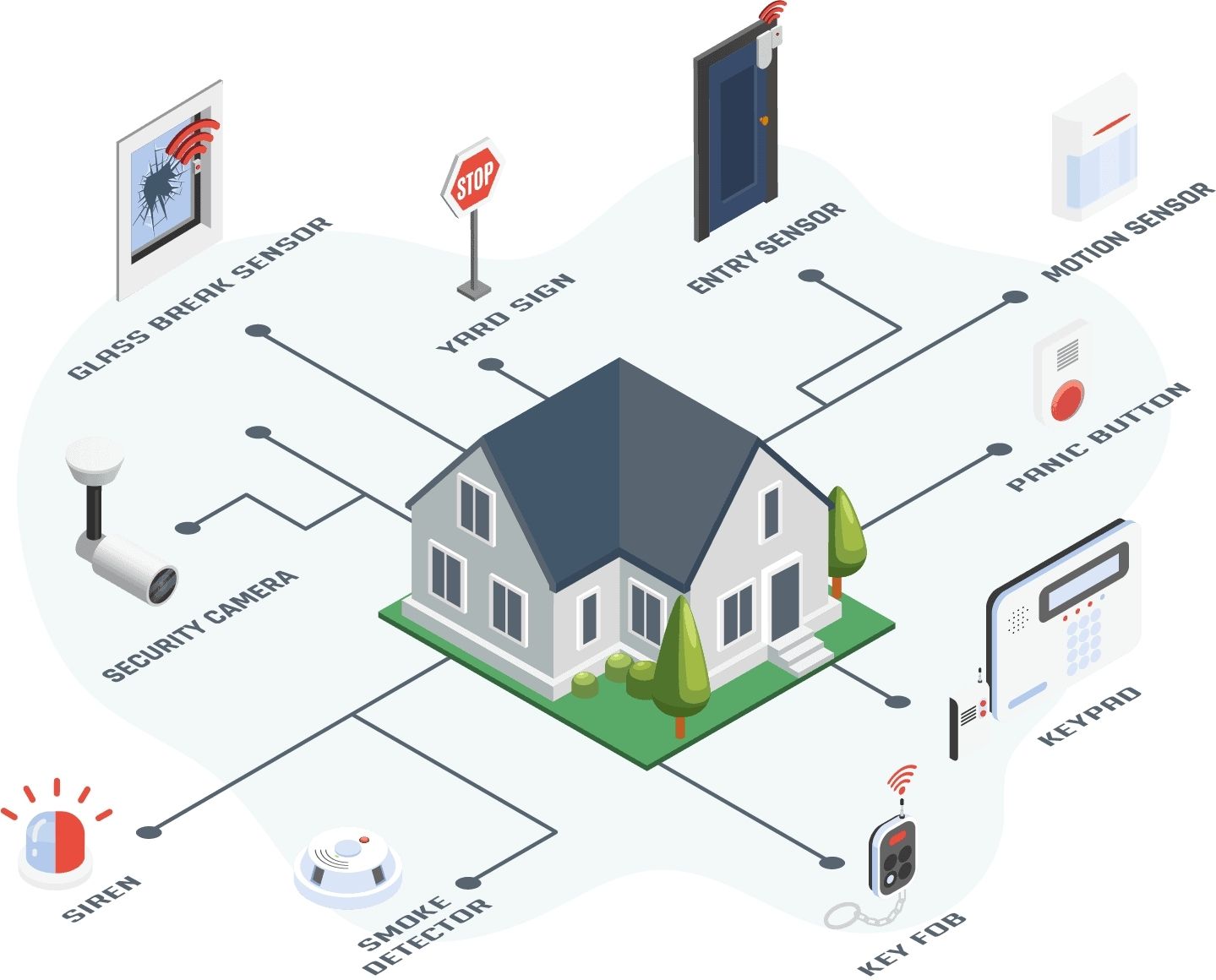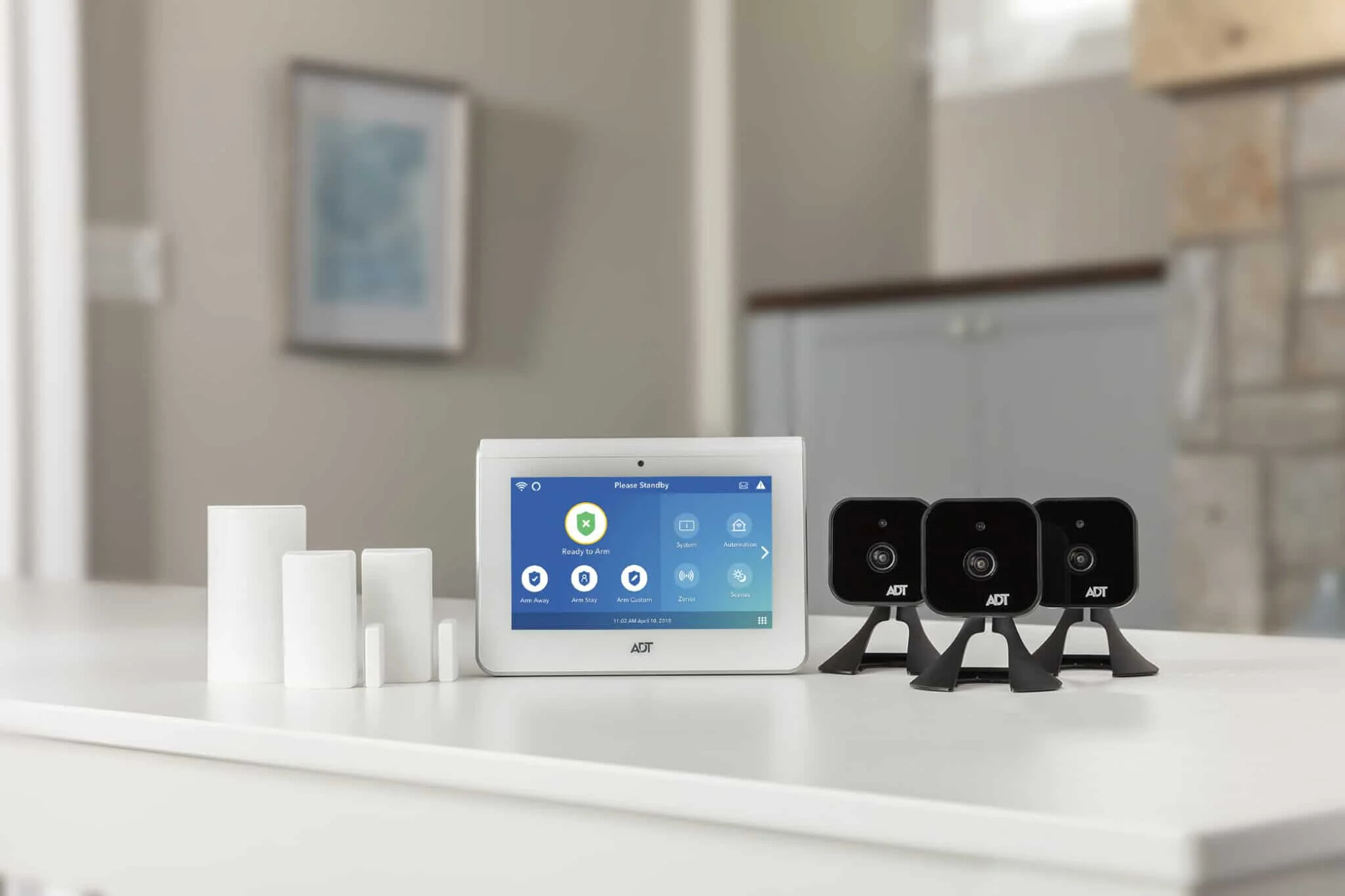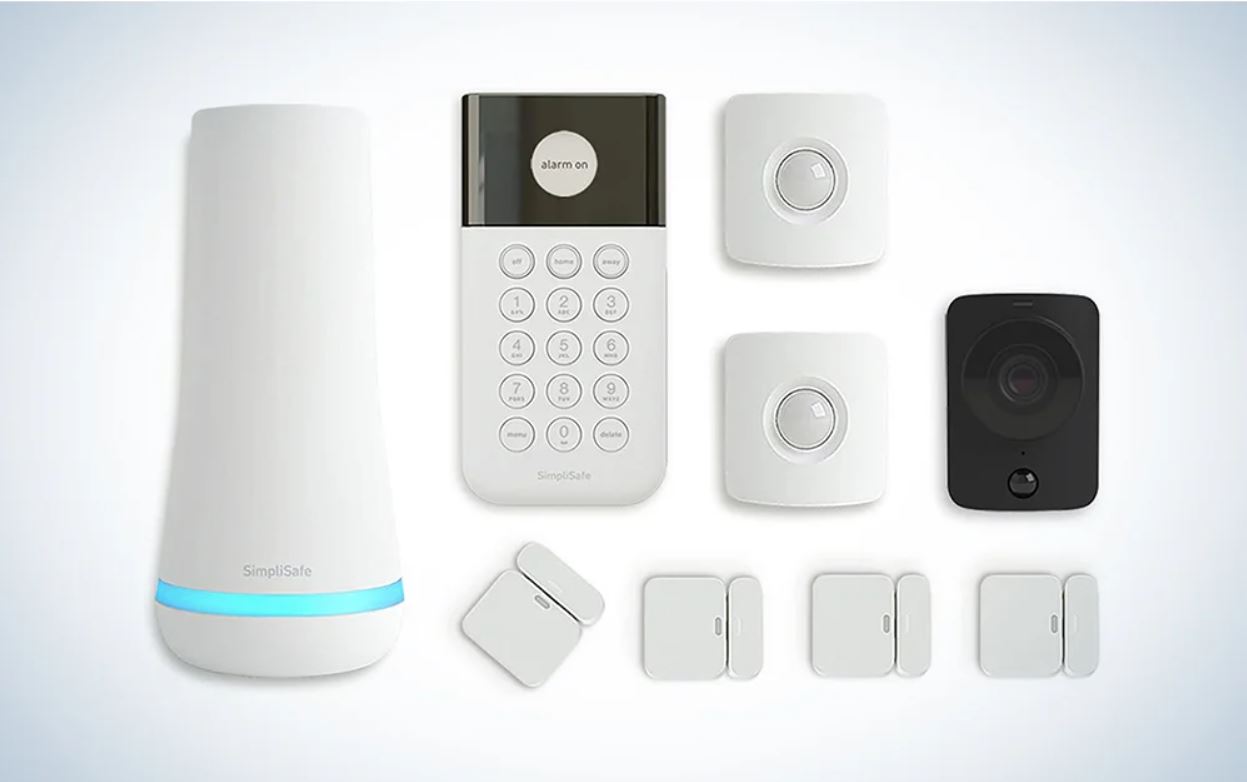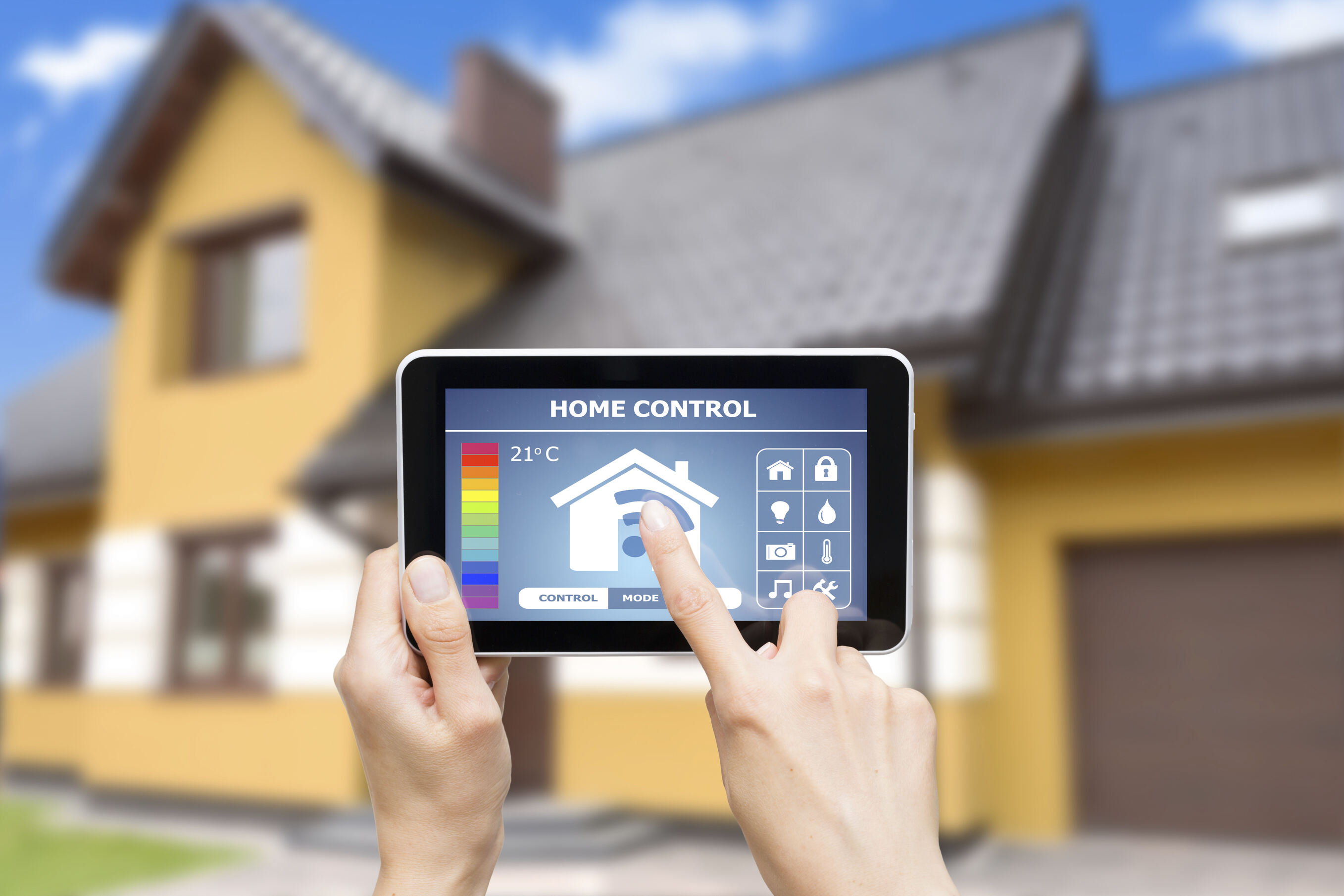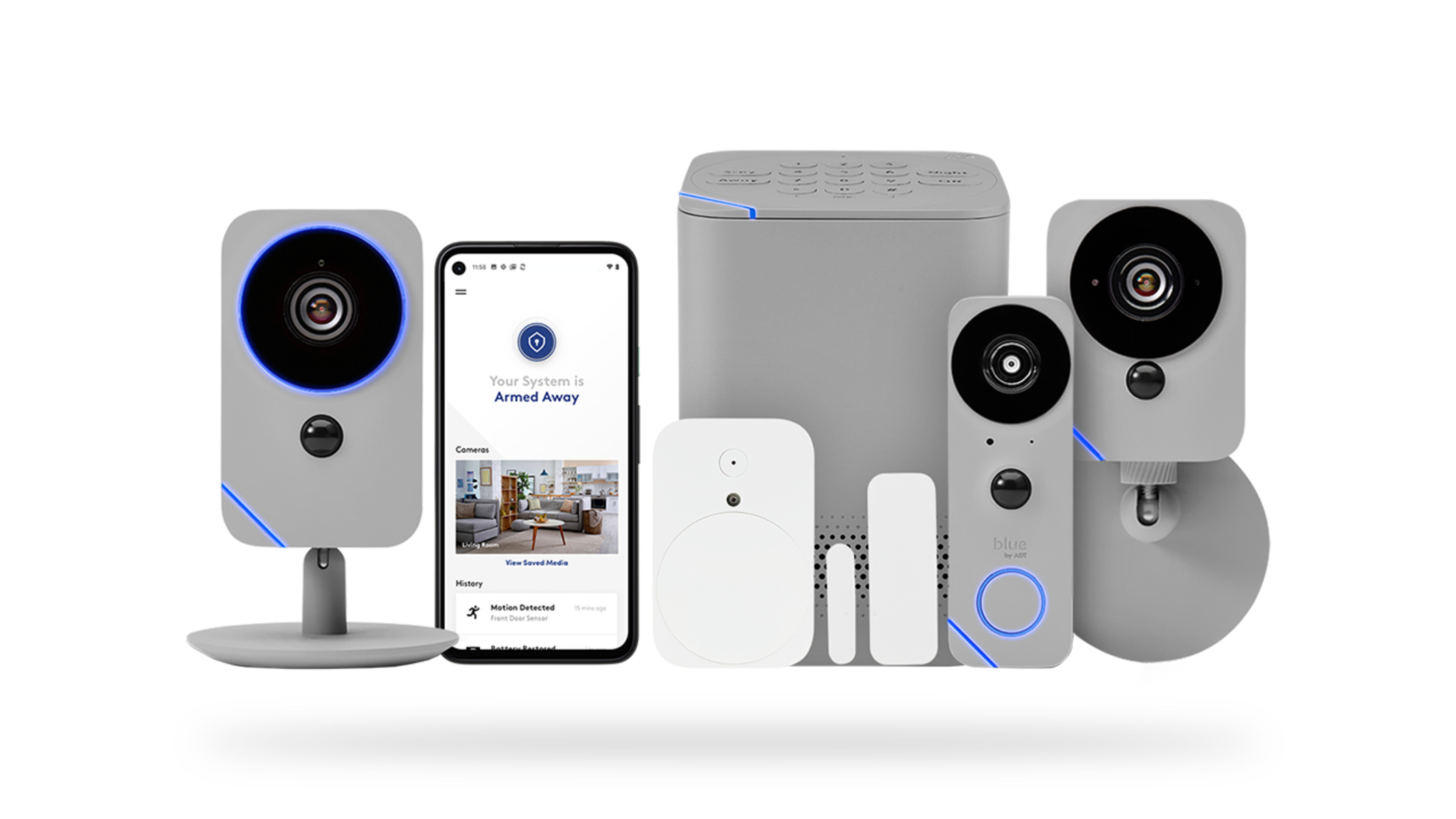Introduction
Welcome to The Home Security Guide, your one-stop resource for everything you need to know about home security systems. In today’s world, ensuring the safety and protection of our homes and loved ones has become a top priority. With the growing sophistication of burglars and the increasing number of home invasions, having a reliable home security system is essential.
A home security system is a comprehensive network of devices and technologies designed to protect your property and its occupants from unauthorized access, burglaries, fires, and other emergencies. It acts as a constant guardian, providing peace of mind and a sense of security whether you’re at home or away. From surveillance cameras and motion detectors to door/window sensors and alarm systems, each component of a home security system works together to create a fortified defense against potential threats.
The importance of having a home security system cannot be overstated. It not only serves as a deterrent to would-be intruders but also provides early detection and prevention of potential hazards. With real-time monitoring and instant alerts, you can take immediate action in case of any suspicious activities or emergencies, allowing you to protect your home and loved ones effectively. The mere presence of visible security measures, such as security cameras and alarm signs, can significantly reduce the risk of break-ins and vandalism.
In the following sections, we will explore the various components of a home security system, different types of systems available in the market, and guide you through the process of choosing and installing the right home security system for your specific needs. We will also provide invaluable tips for maintaining and troubleshooting your system to ensure its optimal performance and reliability.
Whether you are a homeowner, a renter, or someone in the process of building a new property, this guide will empower you with the knowledge and insights to make informed decisions about home security. So, let’s dive in and uncover the world of home security systems, and take the first steps towards safeguarding what matters most to you.
What is a Home Security System?
A home security system is a comprehensive network of devices and technologies designed to safeguard your home and provide you with peace of mind. It consists of various components that work together to detect and deter potential threats, such as burglaries, fires, and other emergencies.
The core purpose of a home security system is to protect your property and its occupants. It acts as a watchful guardian, monitoring your home 24/7 and alerting you to any suspicious activities or situations. By employing a combination of advanced technologies, sensors, and surveillance equipment, a home security system creates multiple layers of defense to secure your home.
The components of a typical home security system include:
- Control Panel: This serves as the main hub of the system, allowing you to arm or disarm it, set up security features, and receive alerts.
- Security Cameras: These capture footage of your home’s interior and exterior, deterring potential intruders and providing evidence in case of a break-in.
- Door and Window Sensors: These detect unauthorized entry by triggering alarms when doors or windows are opened or tampered with.
- Motion Sensors: These are designed to detect movement in specific areas of your home, such as hallways or entryways, and alert you to any potential intruders.
- Alarm Systems: These sound loud alarms to notify you and your neighbors about a potential threat, often deterring intruders and alerting you to take action.
- Smoke Detectors: These detect smoke or the presence of fire, sounding alarms and alerting emergency services to ensure swift action.
- Carbon Monoxide Detectors: These monitor the levels of carbon monoxide in your home and alert you to its presence, allowing you to take necessary precautions.
- Video Doorbells: These provide a visual and audio interface at your front door, enabling you to see and communicate with visitors before granting them access.
Modern home security systems often come with the option of wireless connectivity, allowing for remote monitoring and control through smartphones or tablets. This means you can keep tabs on your home even when you’re away, receiving instant notifications and accessing live camera feeds to ensure everything is secure.
Home security systems not only act as a deterrent but also provide early detection and prevention. They offer a sense of security, allowing you to sleep peacefully at night and relax knowing your home is protected. By investing in a reliable home security system, you are taking a proactive step towards safeguarding your loved ones and your valuable belongings.
The Importance of Home Security
Ensuring the safety and security of your home should be a top priority. A home security system plays a crucial role in protecting your loved ones, your belongings, and creating a safe environment. Here are some reasons why home security is of paramount importance:
1. Deterrence: One of the primary benefits of having a home security system is deterrence. Visible security measures such as surveillance cameras, alarm systems, and yard signs act as a strong deterrent to potential burglars. Knowing that a home is equipped with a security system significantly reduces the likelihood of break-ins or attempted intrusions.
2. Protection from Intruders: The main purpose of a home security system is to protect your property from unauthorized access. Door and window sensors, motion detectors, and security cameras work together to detect any suspicious activity and notify you immediately. If a break-in does occur, an alarm system will alert you and the authorities, giving you the chance to take necessary action and prevent further damage.
3. Peace of Mind: Home security systems provide peace of mind, allowing you to feel safe and secure in your own home. Whether you’re away at work or on vacation, you can have peace of mind knowing that your home is being monitored around the clock. This peace of mind extends to your family members as well, ensuring their safety and well-being.
4. Protection from Fire and Carbon Monoxide: Home security systems often come equipped with smoke detectors and carbon monoxide detectors, providing protection beyond just intrusions. These devices can save lives by alerting you to the presence of smoke or dangerous levels of carbon monoxide, allowing you to take immediate action and evacuate if necessary.
5. Insurance Benefits: Many insurance companies offer discounts on homeowners’ insurance premiums for homes with security systems. By having a home security system, you not only protect yourself and your property but also save money in the long run.
6. Remote Monitoring: With advancements in technology, home security systems now offer remote monitoring capabilities. Through smartphone apps or web interfaces, you can monitor your home in real-time, receive alerts, and even control various aspects of your security system, such as arming or disarming it, from anywhere in the world.
7. Increased Home Value: Installing a home security system can increase the value of your property. Prospective buyers often perceive homes with security systems as desirable and safer, making your home more attractive if you decide to sell in the future.
8. Increased Neighborhood Safety: By having a home security system, you contribute to the overall safety of your neighborhood. A strong network of secured homes can deter criminals and create a safer environment for everyone in the community.
Considering these benefits, it’s clear that home security is not an expense but an investment in the safety and well-being of your loved ones and your property. By taking proactive measures and installing a reliable home security system, you can have peace of mind and enjoy the comfort of a secure and protected home.
Components of a Home Security System
A home security system is composed of various components that work together to provide enhanced protection for your home. Each of these components plays a crucial role in detecting and deterring potential threats. Here are the key components you can find in a typical home security system:
- Control Panel: The control panel serves as the central hub of the security system. It allows you to arm and disarm the system, configure settings, and receive notifications. Modern control panels are user-friendly, with touchscreens and intuitive interfaces for easy operation.
- Security Cameras: Surveillance cameras are essential for monitoring your home. They capture video footage of both the interior and exterior areas, acting as a deterrent and providing evidence in case of any incidents. Security cameras may be placed strategically at entry points, hallways, and other critical areas to maximize coverage.
- Door and Window Sensors: These sensors are designed to detect unauthorized entry through doors and windows. When a door or window is opened or tampered with, the sensors trigger an alarm, alerting you and potentially scaring off intruders. They are typically discreet in design and can be easily installed on various types of doors and windows.
- Motion Sensors: Motion sensors are designed to detect movement within specific areas of your home. They use infrared technology to detect changes in heat patterns, triggering an alarm when an intruder is detected. Motion sensors can be placed in hallways, living areas, and other locations where movement is expected.
- Alarm Systems: An alarm system is one of the most important components of a home security system. When a security breach or intrusion is detected, the alarm system sounds loud sirens and alerts you, your neighbors, or a monitoring center. The loud noise acts as a deterrent and notifies others of the potential threat.
- Smoke and Carbon Monoxide Detectors: These detectors are crucial for safeguarding against fire and carbon monoxide poisoning. Smoke detectors monitor for the presence of smoke, while carbon monoxide detectors detect dangerous levels of carbon monoxide gas. When either is detected, these detectors emit loud alarms, ensuring you can take quick action to prevent harm.
- Video Doorbells: Video doorbells have become increasingly popular in home security systems. They serve as a front door security camera, allowing you to see and communicate with visitors remotely. You can view live video feeds and receive alerts when someone is at your doorstep, providing an extra level of security and convenience.
- Home Automation Integration: Many modern home security systems integrate with home automation technologies. This allows you to control security features, such as lighting, thermostats, and door locks, remotely. Integration with smart home devices enhances convenience and provides additional ways to protect your home.
These components work in tandem to create a comprehensive home security system, giving you the peace of mind you need to feel secure in your home. The combination of surveillance, detection, and alarm systems ensures that your home is protected from intrusions, potential threats, and emergencies.
Types of Home Security Systems
When it comes to home security, there are several types of systems available to cater to different needs and preferences. Understanding the different types will help you choose the most suitable one for your home. Here are some of the most common types of home security systems:
- Monitored Security Systems: Monitored security systems are professionally monitored by a central monitoring station. When the alarm is triggered, the monitoring station receives a signal and contacts you to verify the alarm. If necessary, they will also notify the authorities for further action. Monitored systems provide an extra layer of assurance, as professionals are actively monitoring your home around the clock.
- Unmonitored Security Systems: Unmonitored security systems function without professional monitoring. When the alarm is triggered, it sounds a loud siren or alarm bell to alert you and potentially scare off intruders. While unmonitored systems do not have the additional support of a monitoring center, they can still be effective as a deterrent and provide immediate notification of a security breach.
- Wireless Security Systems: Wireless security systems use wireless technology, such as Wi-Fi or cellular networks, to connect the various components of the system. These systems are easier to install and often more flexible, as they do not require extensive wiring. Wireless systems are also less susceptible to tampering with physical wires, making them a popular choice for many homeowners.
- Wired Security Systems: Wired security systems rely on physical wiring to connect the components of the system. They are typically installed during home construction or renovation, as wiring needs to be laid in walls and ceilings. While wired systems require more installation effort and may involve drilling holes for wiring, they offer a reliable and robust security solution.
- Smart Home Security Systems: Smart home security systems integrate with home automation technologies, allowing you to control security features remotely. These systems often come with smartphone apps or web interfaces that let you arm or disarm the system, receive real-time alerts, and access live camera feeds from anywhere. Smart home security systems provide convenience, flexibility, and seamless integration with other smart devices in your home.
- DIY (Do-It-Yourself) Security Systems: DIY security systems are designed for easy installation by homeowners themselves. These systems come as pre-packaged kits and often use wireless technology for easy setup. DIY systems are cost-effective and allow homeowners to customize their security setup according to their specific needs and budget.
Each type of home security system has its own advantages and considerations. Factors such as budget, ease of installation, level of monitoring, and integration with smart devices should be taken into account when choosing the right system for your home. It’s important to evaluate your needs and priorities to ensure that the chosen system aligns with your requirements and provides the desired levels of security and peace of mind.
Wired vs. Wireless Home Security System
When it comes to choosing a home security system, one of the key decisions you’ll face is whether to opt for a wired or wireless system. Both options have their own advantages and considerations, so it’s important to understand the differences between the two. Here’s a comparison of wired and wireless home security systems:
Wired Home Security System:
- Reliability: Wired systems are known for their reliability. Since they are hardwired into your home’s electrical system, they don’t rely on wireless signals or batteries that can be affected by interference or power outages.
- Stability: Wired systems provide a stable and consistent connection. They are not susceptible to signal disruptions or Wi-Fi interference, ensuring uninterrupted communication between the different components of the system.
- Difficult to Tamper: Wired systems are harder to tamper with compared to wireless systems. Intruders cannot interfere with wireless signals or jamming devices, giving you added peace of mind.
- Higher Installation Cost: Wired systems typically require professional installation, as they involve running wires through walls and ceilings. This professional installation can add to the overall cost of the system.
- Less Flexibility: Due to the physical wiring involved, wired systems have less flexibility in terms of component placement. You need to ensure that the wiring is properly installed and concealed.
Wireless Home Security System:
- Ease of Installation: Wireless systems are easier to install compared to wired systems. They do not require extensive drilling or running wires, making them more suitable for renters or those looking for a DIY installation option.
- Flexibility and Scalability: Wireless systems offer more flexibility in terms of component placement. You can easily move or add devices without the constraints of physical wiring, making it easier to adapt the system to your changing needs.
- Remote Access: Wireless systems often come with remote access capabilities, allowing you to control and monitor your system remotely through smartphone apps or web interfaces. This provides convenience and the ability to monitor your home even when you’re away.
- Potential Interference: Wireless systems can be susceptible to signal interference from other wireless devices or Wi-Fi congestion. However, advances in technology have significantly reduced these issues.
- Battery-Dependent: Since wireless systems rely on battery power, it’s essential to regularly check and replace batteries to ensure uninterrupted operation.
Ultimately, the choice between a wired or wireless home security system depends on your specific needs and circumstances. If you prioritize reliability and are willing to invest in professional installation, a wired system may be the right choice. On the other hand, if you value flexibility, easy installation, and remote access capabilities, a wireless system may be more suitable. It’s important to assess factors such as budget, convenience, and the layout of your home when making this decision.
Choosing the Right Home Security System for Your Needs
When it comes to selecting a home security system, there are several factors to consider to ensure that you choose the right one for your specific needs. Here are some key considerations to help guide you in selecting the perfect home security system:
1. Assess Your Security Needs: Start by evaluating your specific security requirements. Consider factors such as the size of your home, the number of entry points, and the level of security you desire. Determine whether you need basic intrusion detection, fire and carbon monoxide monitoring, or additional features like video surveillance and home automation integration.
2. Budget: Determine your budget for a home security system. Different systems come with varying costs, ranging from DIY options to professionally installed systems with ongoing monitoring fees. Decide how much you are willing to invest in a system that fits your needs and provides the desired level of security.
3. Research Different Providers: Research reputable security system providers and compare their offerings. Look for companies that have a good track record in the industry, positive customer reviews, and reliable customer support. Consider the services they offer, such as professional monitoring, warranty, and system maintenance.
4. Consider Monitoring Options: Decide whether you want a monitored or unmonitored security system. Monitored systems provide an extra level of protection as professionals actively monitor your home and alert you or the authorities in case of an emergency. Unmonitored systems are more cost-effective but rely on loud alarms to scare off intruders.
5. Evaluate Installation Options: Determine whether you prefer a professionally installed system or a DIY option. Professionally installed systems ensure proper placement and configuration of devices but come with additional installation costs. DIY systems offer easier installation and customization but may require more effort on your part.
6. Review System Features: Consider the features and capabilities of different security systems. Look for essential components such as door/window sensors, motion sensors, and alarm systems. Assess if you want additional features like surveillance cameras, video doorbells, and home automation integration.
7. Check Compatibility and Integration: If you have existing smart home devices or plan to incorporate them in the future, ensure that the home security system you choose is compatible and can integrate with your other devices. This allows you to control and monitor your home security alongside other home automation features.
8. Consult with Security Professionals: Seek advice from security professionals who can assess your home and recommend the most suitable security system based on your specific needs. They can provide valuable insights and help you understand the technicalities involved.
9. Read and Understand Contracts: If you choose a monitored security system, carefully review the contract terms and conditions. Understand the duration, cancellation policies, and any additional fees involved. Ensure you are comfortable with the terms before committing to a contract.
10. Customer Support and Maintenance: Consider the level of customer support and maintenance provided by the security system provider. Look for companies that offer reliable technical support, regular system maintenance, and warranty coverage.
By considering these factors, you can make an informed decision and choose a home security system that meets your specific needs, budget, and desired level of protection. Remember that the right home security system is an investment in the safety and security of your home and loved ones.
Benefits of Having a Home Security System
Investing in a home security system provides numerous benefits that go beyond just protecting your property from intruders. Here are some key benefits of having a home security system:
1. Enhanced Safety and Protection: A home security system offers increased safety and protection for your home and loved ones. It acts as a deterrent to potential intruders and provides early detection and alerts in case of a security breach. This allows you to take prompt action and minimize the risk of harm or property damage.
2. Peace of Mind: Perhaps one of the most significant benefits of a home security system is the peace of mind it provides. Whether you’re home or away, you can have confidence knowing that your property is being monitored 24/7. This peace of mind allows you and your family to live without constant worry and fear of potential threats.
3. Remote Monitoring: Many modern home security systems offer remote monitoring capabilities. With the use of smartphone apps or web interfaces, you can access live camera feeds, receive alerts, and control various aspects of your security system from anywhere in the world. This allows you to keep an eye on your home, even when you’re not physically present.
4. Deterrence of Intruders: Visible security measures such as surveillance cameras, alarm systems, and signs indicating the presence of a security system act as a powerful deterrent to potential intruders. Research has shown that homes with security systems are less likely to be targeted by burglars, reducing the risk of break-ins.
5. Protection from Fire and Carbon Monoxide: Many home security systems are equipped with smoke detectors and carbon monoxide detectors. These devices can detect the presence of smoke or dangerous levels of carbon monoxide in your home, allowing you to take immediate action and potentially save lives.
6. Insurance Benefits: Having a home security system can potentially lead to lower insurance premiums. Insurance companies often offer discounts for homes with security systems, as they are considered less risky. Long-term savings on insurance costs can offset the initial investment in a security system.
7. Increase in Home Value: Installing a home security system can increase the value of your property. Prospective buyers often perceive homes with security systems as more desirable and safer. This can attract potential buyers and potentially lead to a higher selling price if you decide to sell your home in the future.
8. Peaceful Sleep: Knowing that your home is protected by a security system can give you a sense of peace and security, allowing you to have a good night’s sleep without worrying about potential threats. The feeling of safety and protection translates to improved well-being and quality of life.
9. Quick Emergency Response: In the unfortunate event of an emergency, a home security system can provide quick response and assistance. Monitored systems can automatically alert the authorities, ensuring a swift response and minimizing any potential damage or harm.
10. Remote Access Control: Integration with home automation technologies allows for remote access control. You can remotely arm or disarm your security system, lock or unlock doors, and even control lighting and thermostats. This feature adds convenience and enhances the overall security and efficiency of your home.
In summary, a home security system offers multiple benefits, including increased safety, peace of mind, remote monitoring, deterrence of intruders, protection from fire and carbon monoxide, potential insurance savings, increased home value, improved sleep, quick emergency response, and remote access control. By investing in a reliable home security system, you are taking proactive measures to create a safe and secure living environment for you and your loved ones.
How to Install a Home Security System
Installing a home security system may seem like a daunting task, but with proper planning and guidance, it can be a manageable project. Here are some general steps to help you install a home security system:
1. Assess Your Needs: Start by evaluating your security requirements and determining the areas of your home that need coverage. This will help you decide the type and number of components you’ll need for your system.
2. Choose the Right System: Select a home security system that aligns with your needs and budget. Consider factors such as wired or wireless, monitored or unmonitored, and the specific features you require.
3. Read the Instruction Manual: Carefully read the instruction manual provided by the manufacturer for each component of your security system. Make sure you understand the installation process and any specific requirements.
4. Prepare Your Tools: Gather the necessary tools for the installation, such as a drill, screwdrivers, wire strippers, and cable clips. Ensure that you have all the equipment required to properly install and mount your devices.
5. Plan the Placement of Components: Determine the optimal placement for each component of your security system. This includes cameras, sensors, control panel, and any other devices. Consider angles, coverage areas, and accessibility in your planning.
6. Mount Cameras and Sensors: Begin by mounting surveillance cameras and sensors according to your predetermined placement plan. Follow the manufacturer’s instructions for proper installation, ensuring that they are securely attached and positioned correctly for optimal coverage.
7. Connect and Wire Components: Connect your security system components according to the manufacturer’s instructions. For wired systems, run the necessary wires through walls and ceilings, ensuring proper positioning and concealment.
8. Set Up the Control Panel: Install and set up the control panel in a central location. Make sure it is easily accessible and that proper power and network connections are in place.
9. Configure System Settings: Follow the instructions to set up and configure your security system’s settings. This includes inputting personal information, setting up user codes, and adjusting alarm and notification preferences.
10. Test the System: After installation, thoroughly test your security system to ensure that all components are working correctly. Arm and disarm the system, trigger alarms, and verify that notifications are received as intended.
11. Consider Professional Assistance: If you feel unsure about the installation process or want to ensure everything is installed correctly, consider hiring a professional to install your home security system. They will have the expertise and experience to setup the system effectively.
12. Familiarize Yourself with System Operations: Once the installation is complete, take the time to familiarize yourself with how your security system operates. Understand how to arm and disarm the system, view camera feeds, receive notifications, and manage any additional features.
Remember, the installation process may vary depending on the specific brand and type of home security system you choose. It’s important to carefully follow the manufacturer’s instructions for each component to ensure a successful installation and optimal functionality of your system.
Tips for Maintaining and Troubleshooting Your Home Security System
Maintaining and troubleshooting your home security system is essential to ensure its optimal performance and reliability. Here are some helpful tips to help you keep your system in top shape:
1. Regularly Test Your System: Test your security system regularly to ensure that all components are functioning properly. Arm and disarm the system, trigger alarms, and make sure notifications are received as intended. Consult the manufacturer’s instructions for specific testing procedures.
2. Replace Batteries: If your security system contains battery-powered components, such as sensors or remote controls, regularly check and replace batteries as needed. Low or dead batteries can cause devices to malfunction or cease working completely.
3. Keep Components Clean: Dust, dirt, and debris can impair the functionality of your security system’s components, particularly cameras and sensors. Regularly clean these devices to maintain clear visibility and accurate detection capabilities.
4. Check and Update Firmware: If your security system has firmware or software, periodically check for updates from the manufacturer. Updating the firmware ensures that your system operates with the latest features and bug fixes, improving performance and security.
5. Review and Update User Codes: If your security system has user codes, periodically review and update these codes. Regularly changing codes ensures that unauthorized individuals do not gain access to your system. Avoid using obvious or easily guessable codes.
6. Maintain Clear Line of Sight: Ensure that cameras and motion sensors have a clear line of sight to the areas they are intended to monitor. Remove any obstructions, such as vegetation or decorations, that may impede their field of view or cause false triggers.
7. Secure Wireless Connections: If you have a wireless security system, secure your Wi-Fi network with a strong password to prevent unauthorized access. Additionally, consider enabling encryption and other security features provided by your system to safeguard your data.
8. Stay Informed: Keep up-to-date with the latest security trends and information. Stay informed about new threats, vulnerabilities, and best practices in home security. This knowledge will help you identify and address any potential security issues proactively.
9. Maintain Emergency Contact Information: Ensure that your emergency contact information, such as monitoring company details and local authorities’ contact numbers, is up to date. Make sure every person in your household is aware of the procedure to follow in case of an emergency.
10. Schedule Professional Maintenance: Consider scheduling professional maintenance visits for your security system. Professional technicians can inspect and service your system, ensuring that it remains in optimal condition and addressing any potential issues before they escalate.
11. Keep Documentation Handy: Maintain records of your security system’s documentation, including user manuals, warranties, and receipts. Having these documents readily available can be helpful when troubleshooting issues or contacting customer support.
12. Contact Customer Support: If you encounter any technical problems or need assistance with your security system, don’t hesitate to contact the manufacturer’s customer support. They can provide troubleshooting guidance, answer your questions, and help resolve any issues effectively.
By following these tips, you can maintain the reliability and effectiveness of your home security system. Remember that prevention and regular maintenance are key to ensuring that your system functions optimally and provides the security and peace of mind you expect.
Conclusion
Securing your home and protecting your loved ones is of utmost importance. A reliable home security system offers a comprehensive defense against potential threats, providing invaluable peace of mind and enhanced safety. By understanding the components, types, and installation process, you can choose the right security system tailored to your needs.
A home security system acts as a powerful deterrent, deterring potential intruders and providing early detection and alerts. Integrated features such as surveillance cameras, motion sensors, and alarm systems work together to create a layered defense, ensuring the safety and security of your property.
Whether you opt for a wired or wireless system, a monitored or unmonitored one, the benefits are vast. Enhanced protection, peace of mind, remote monitoring capabilities, and immediate emergency response are just a few of the advantages you can expect from a home security system.
Regular maintenance and troubleshooting are crucial for maintaining the performance and reliability of your security system. Testing components, replacing batteries, and keeping devices clean are important steps to ensure optimal functionality. Staying informed about system updates, securing wireless connections, and scheduling professional maintenance visits further enhance the effectiveness of your system.
Remember, the safety of your home and loved ones should always be a top priority. By investing in a home security system and following best practices for installation, maintenance, and troubleshooting, you can create a secure environment and have the peace of mind you deserve.







